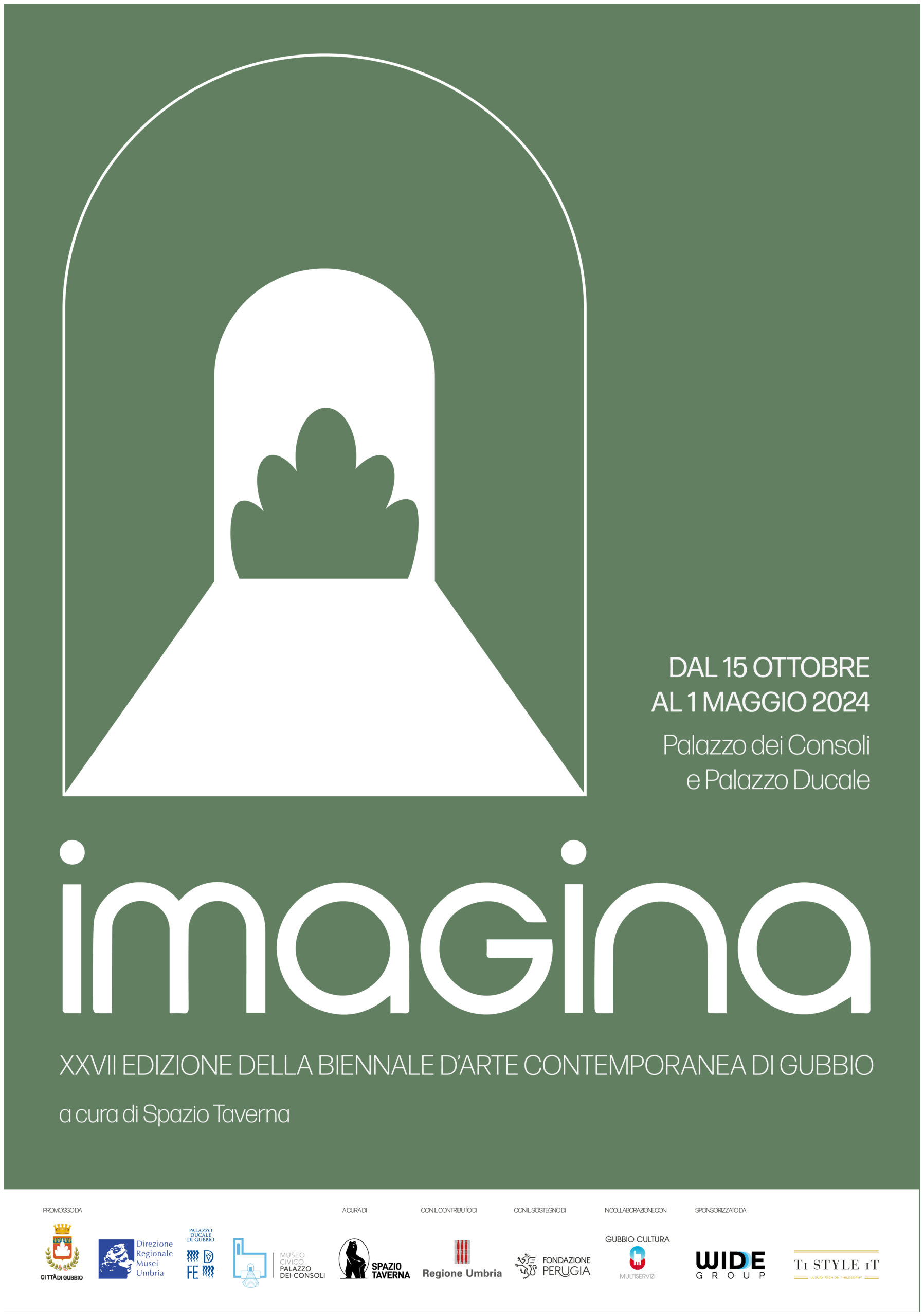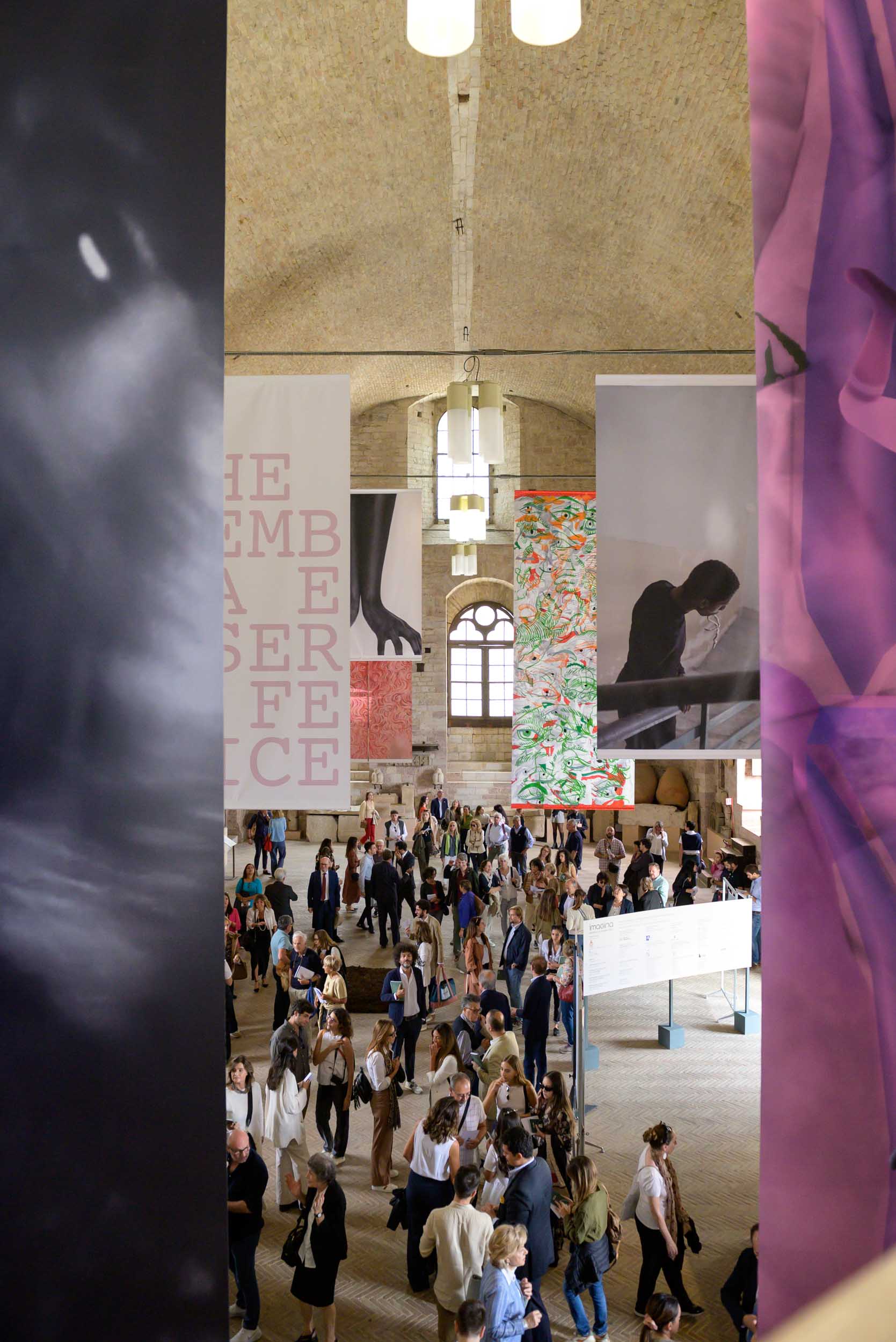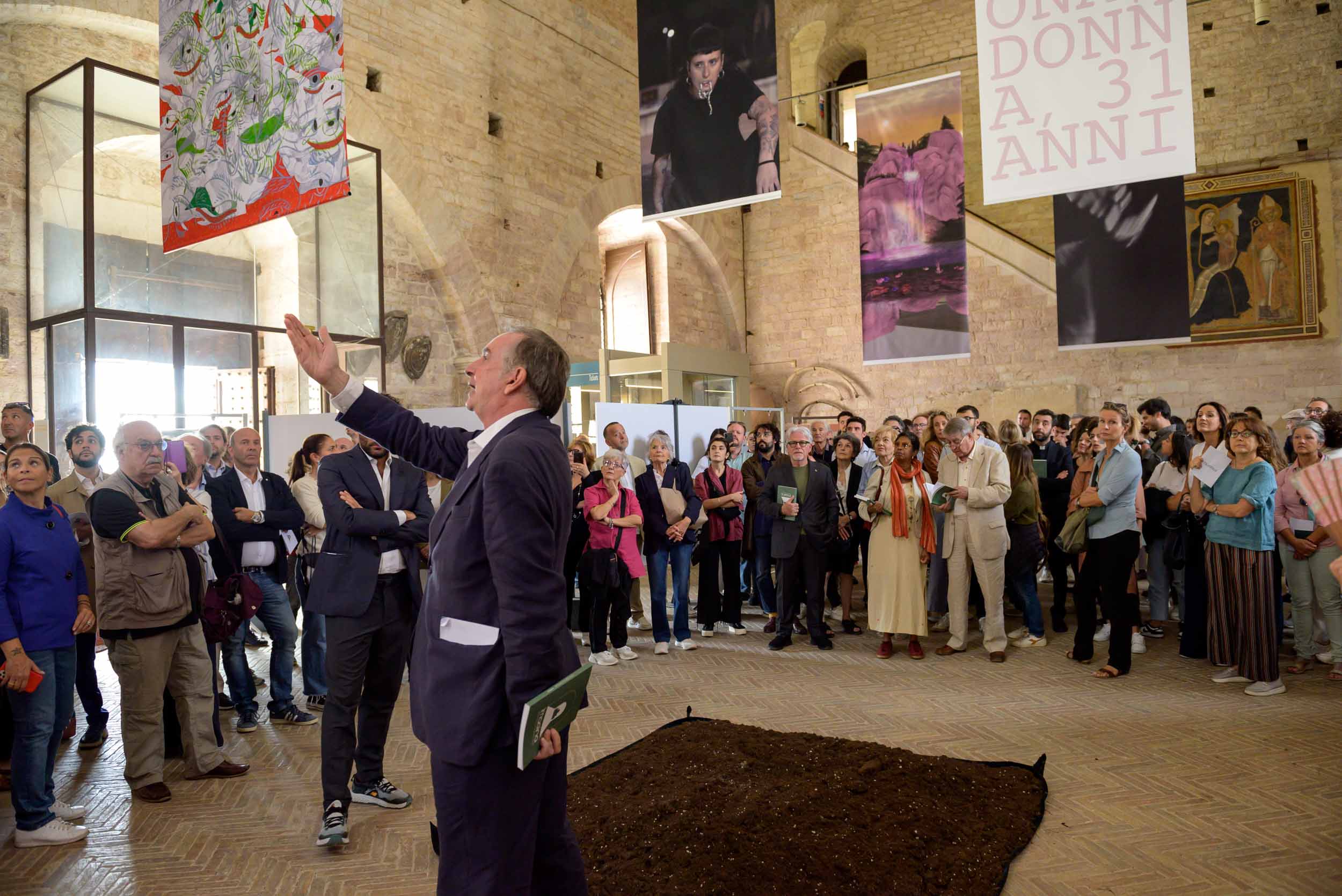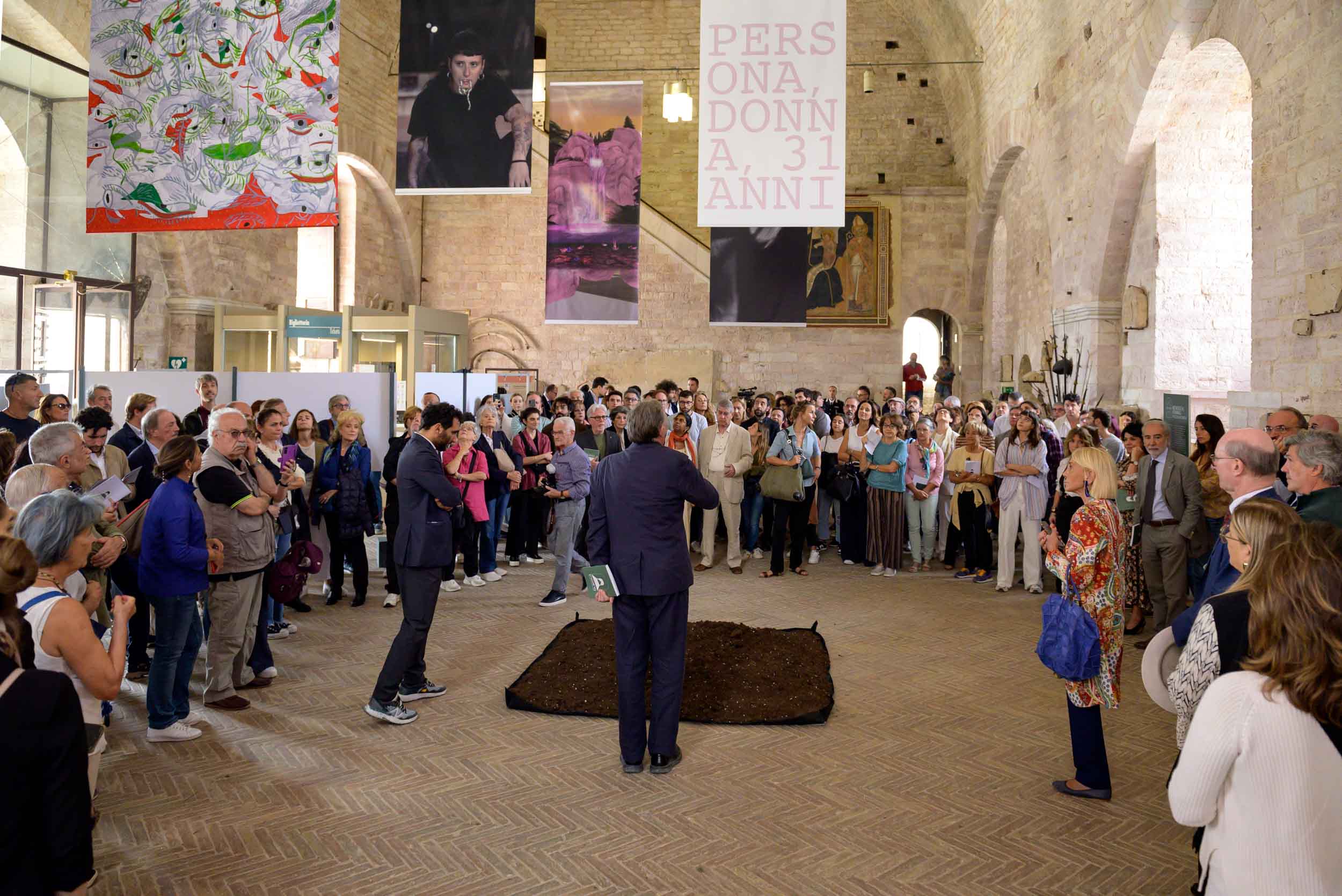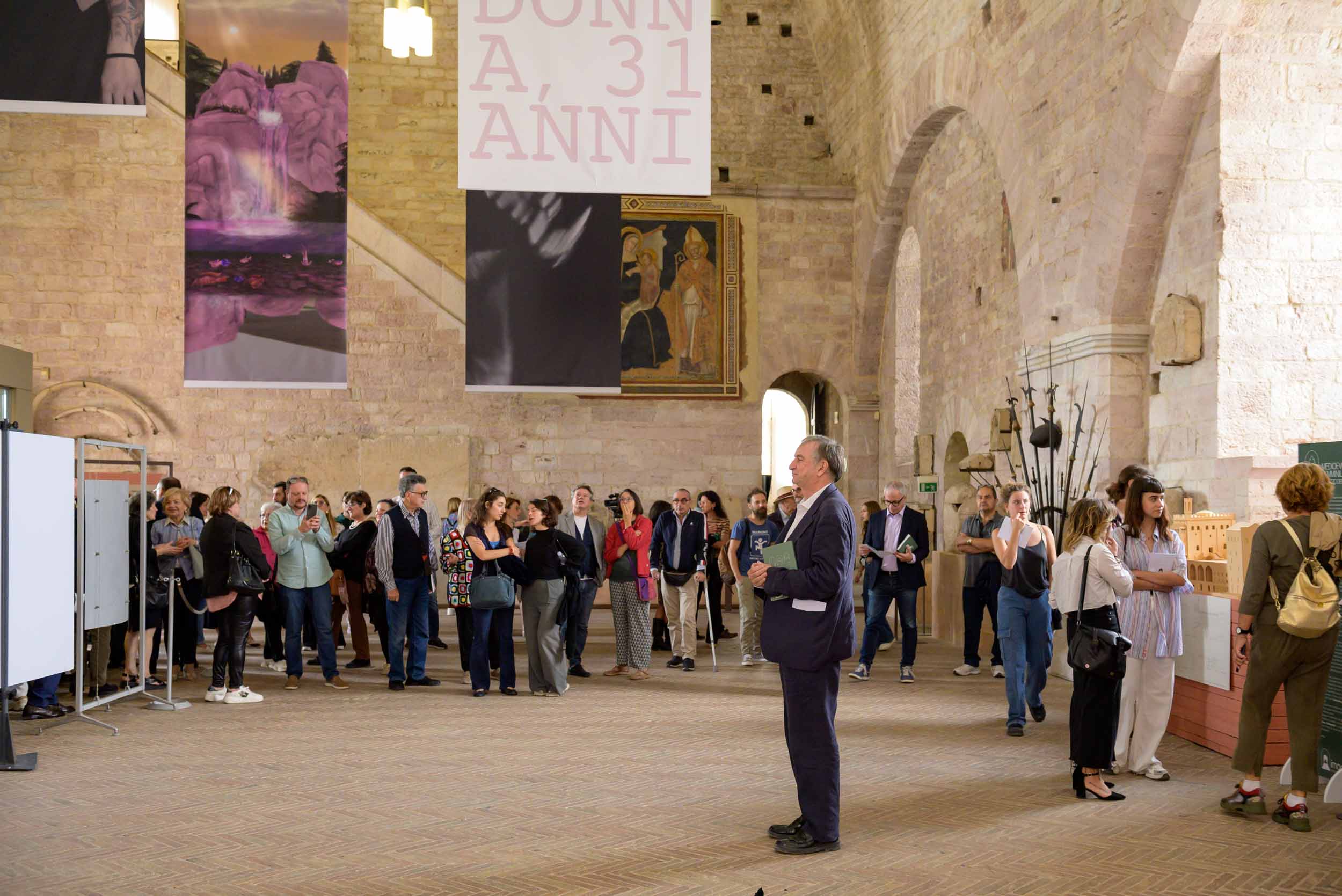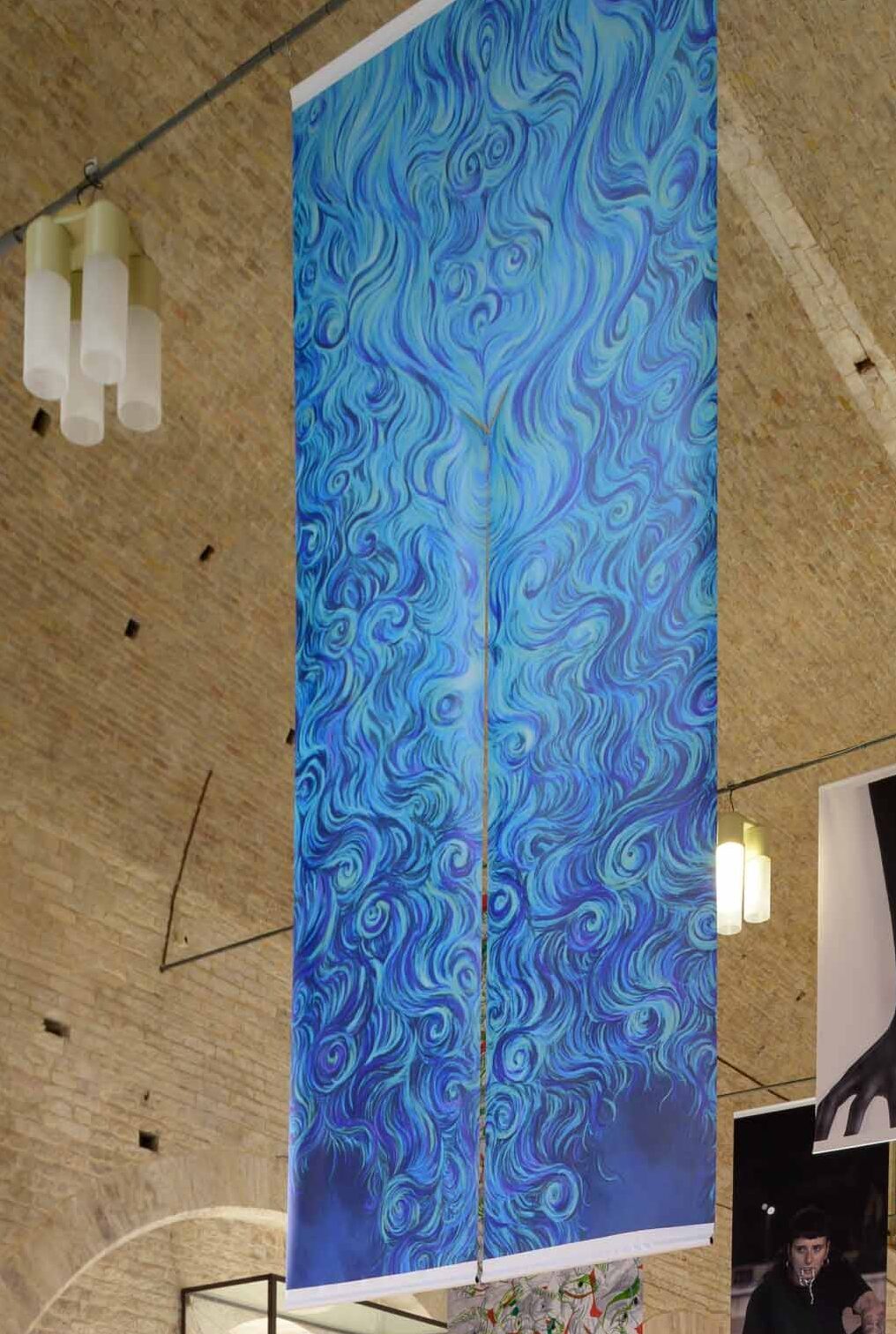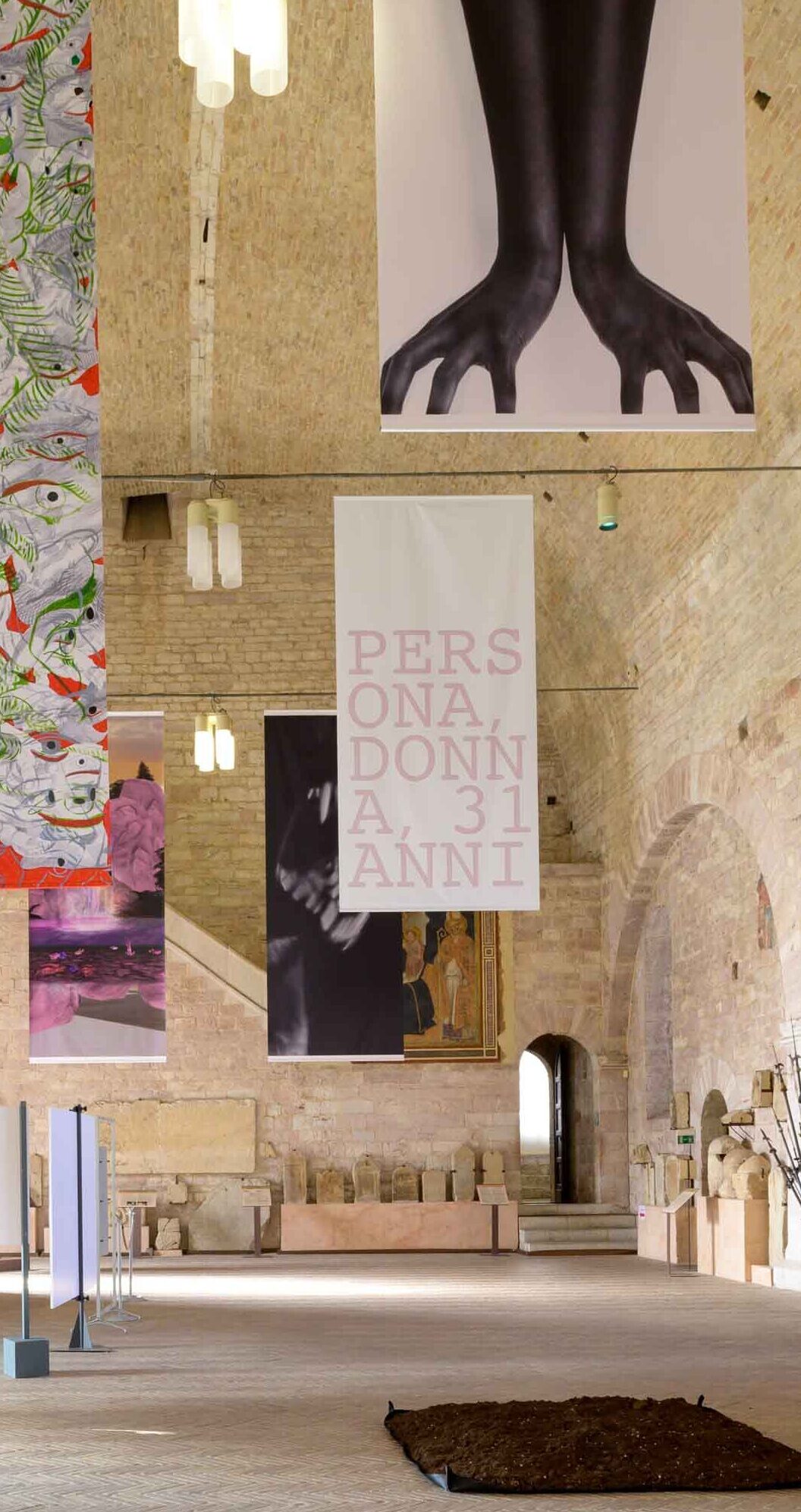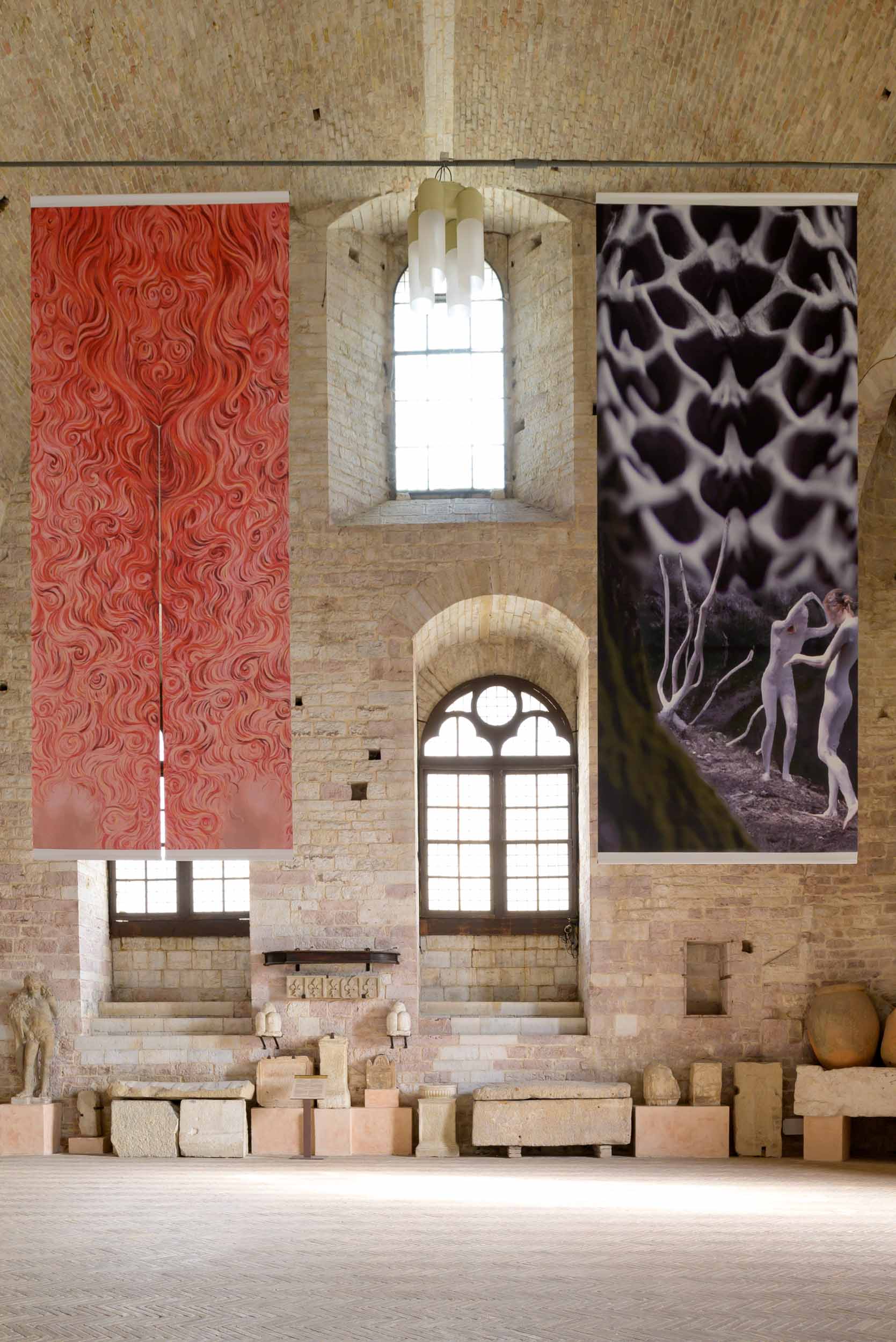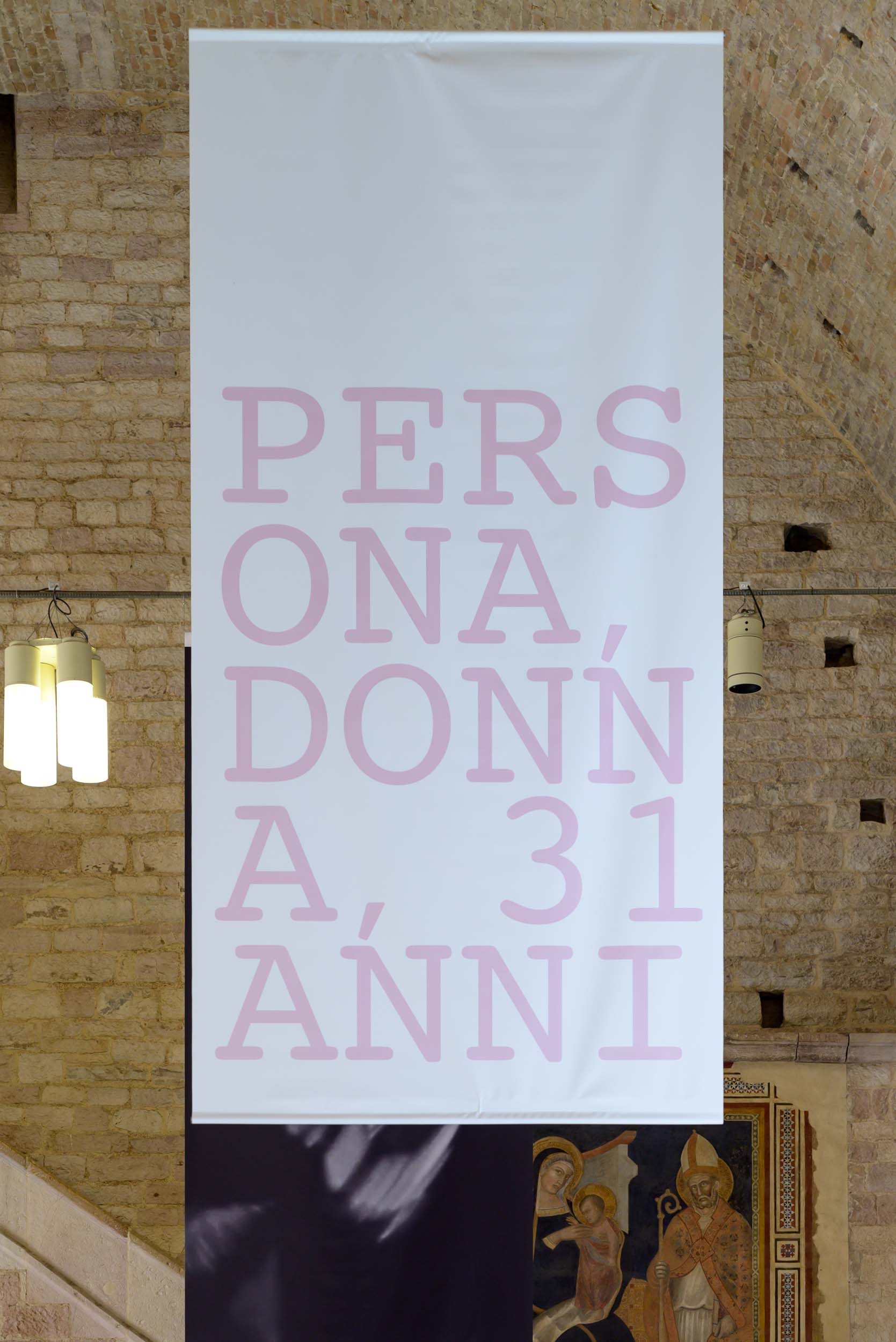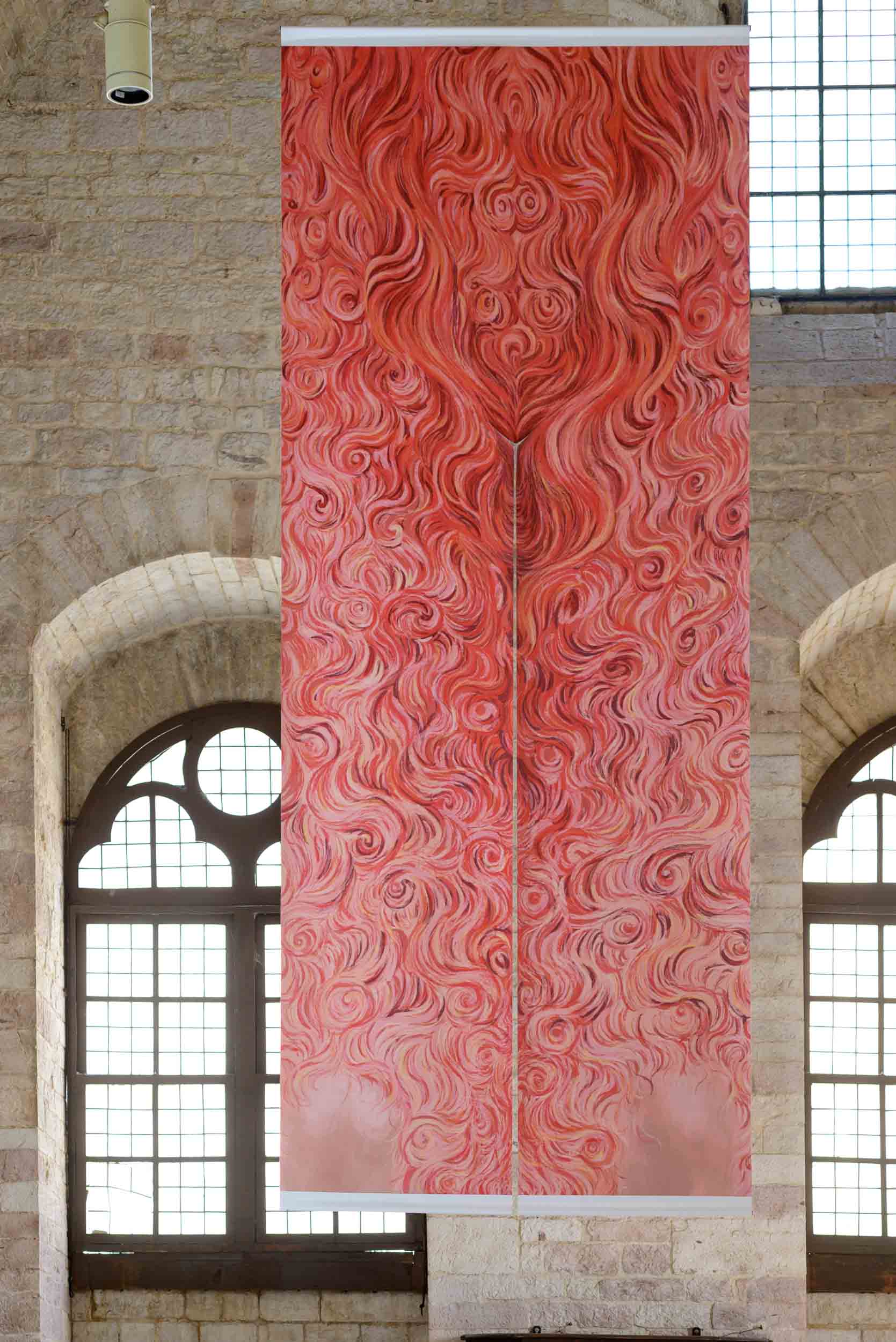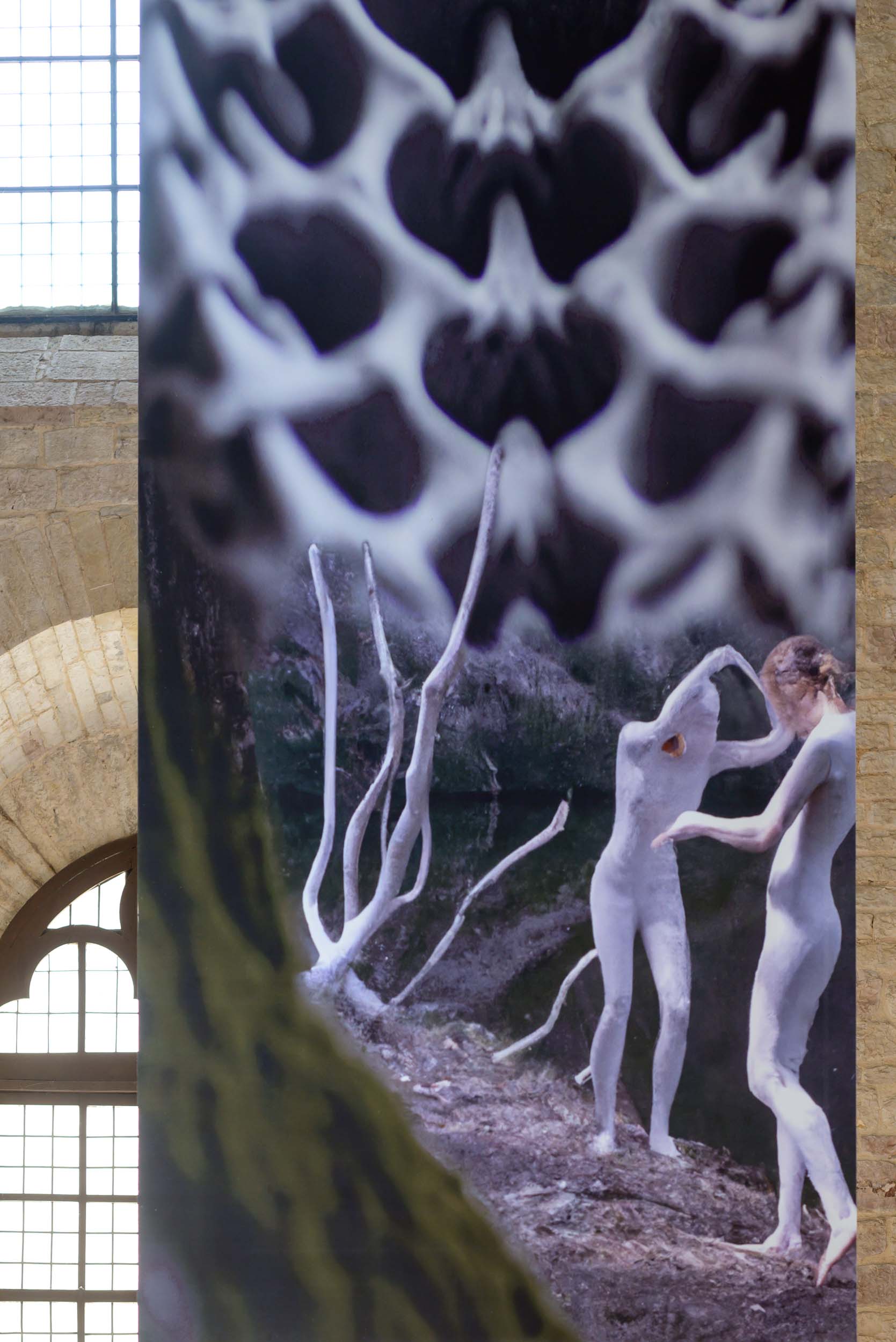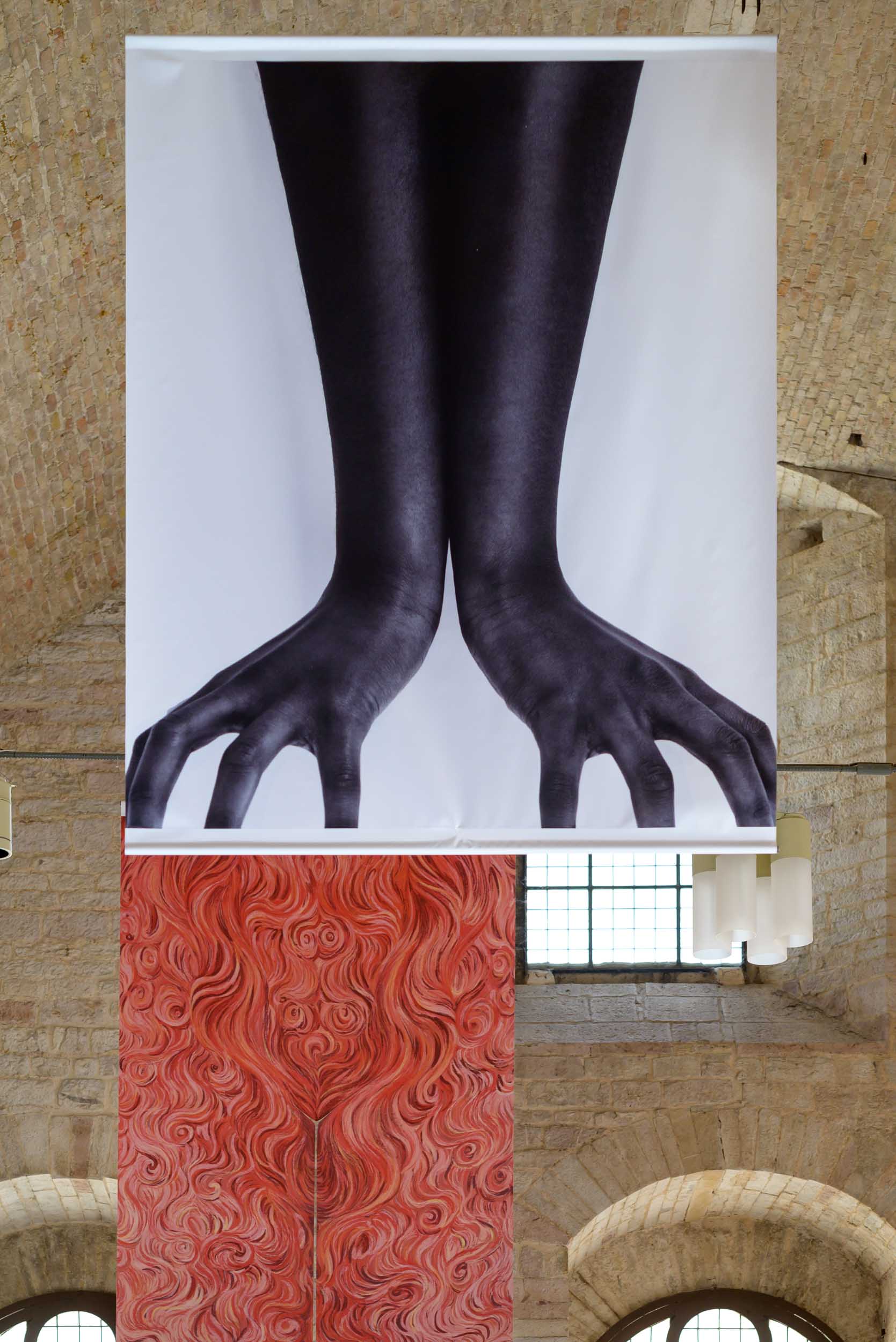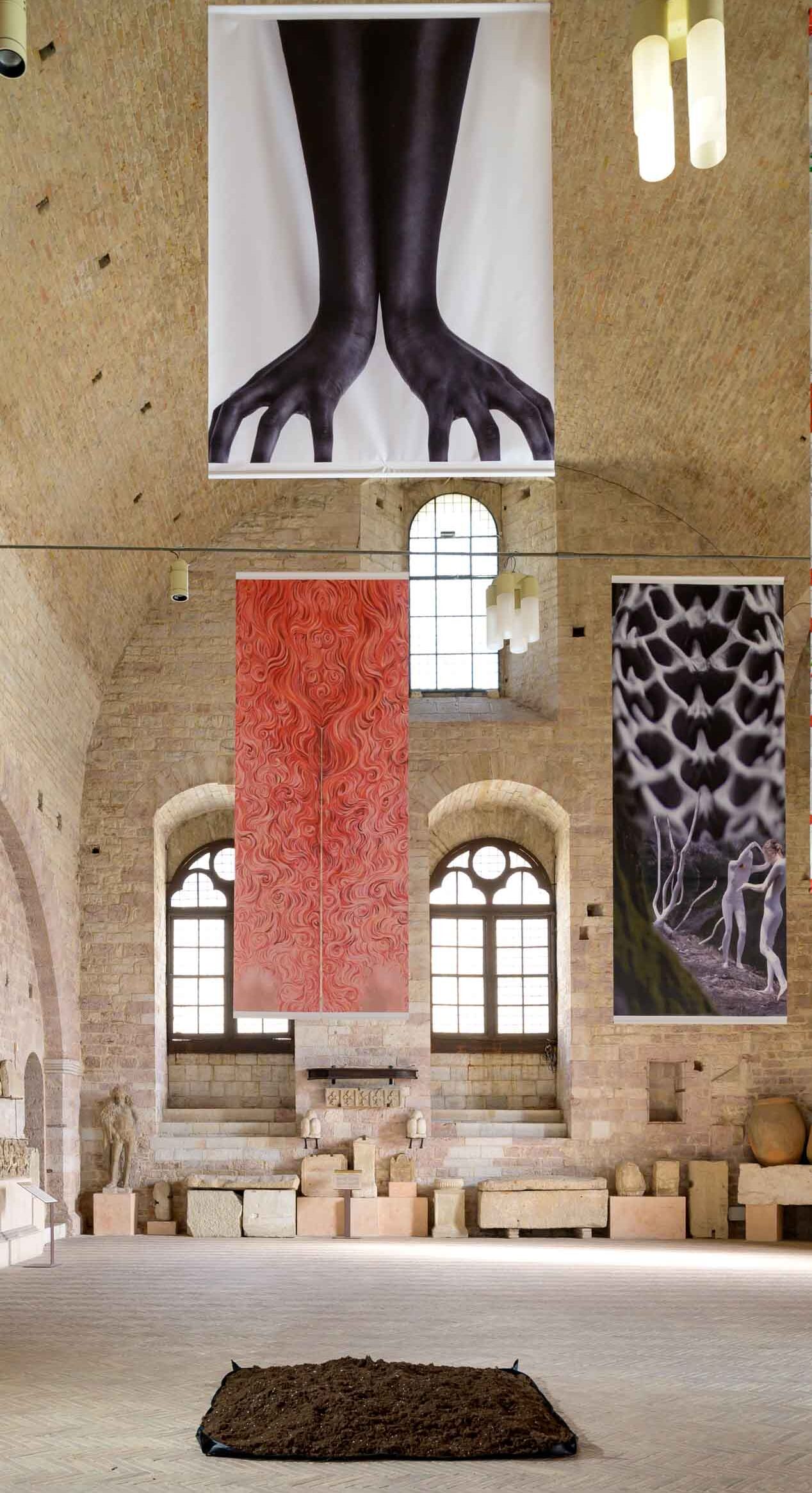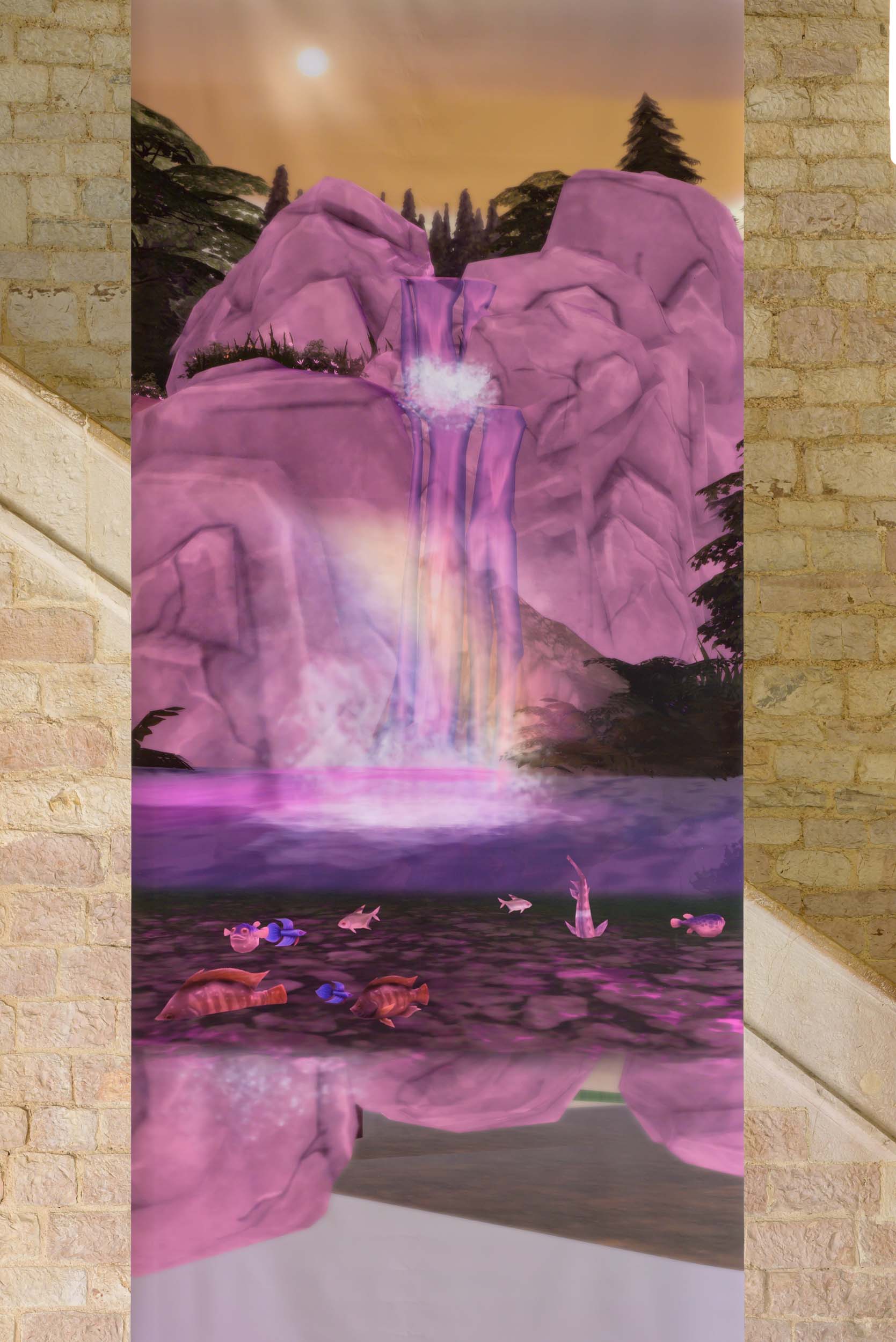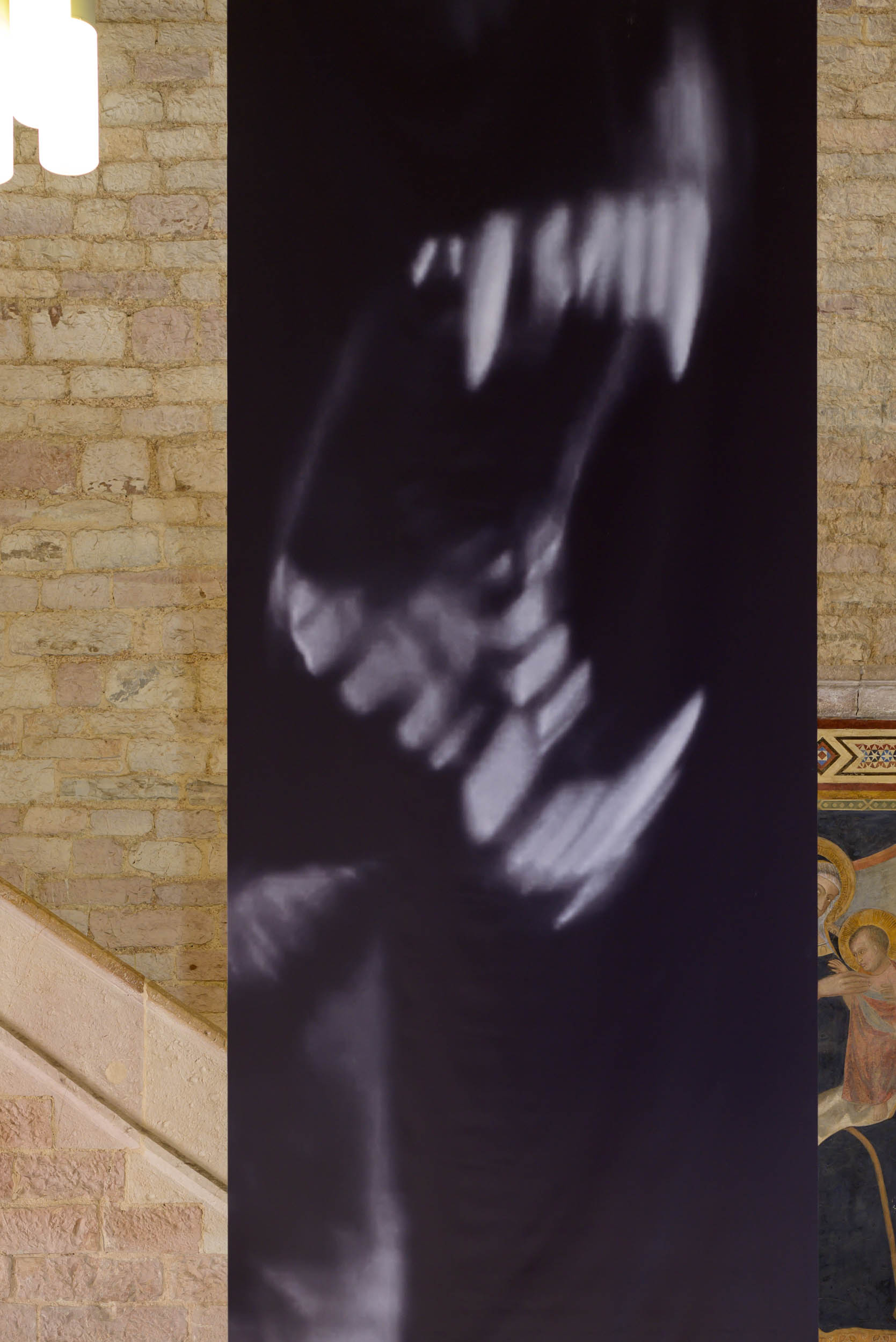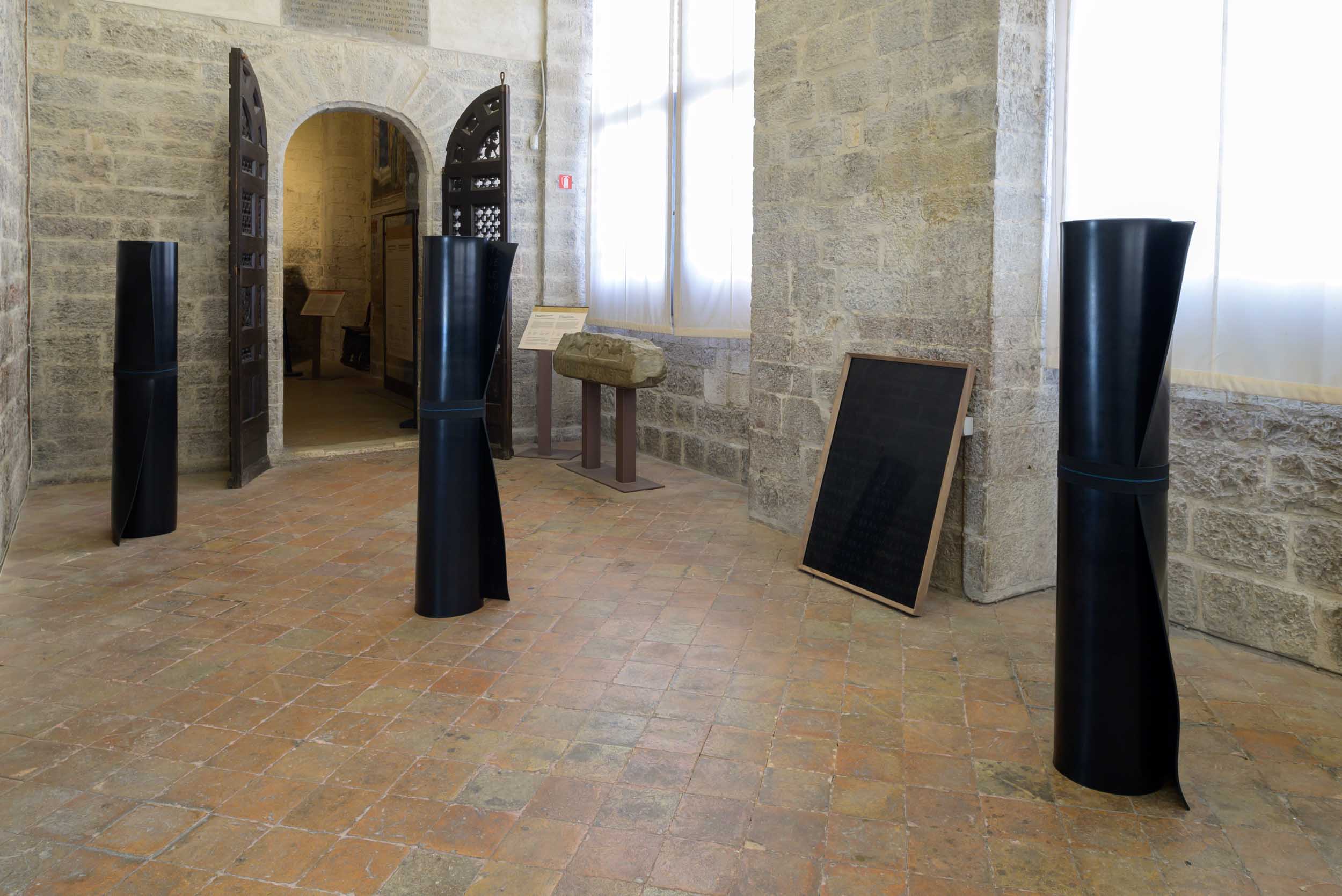A CONTEMPORARY ART ITINERARY: XXVII BIENNALE OF GUBBIO
The 27th edition of the Biennale of Gubbio challanges the ability of contemporary art to reactivate and reinvent the relationship with the territory and with the iconic places that enclose its genius loci. Therefore, works were proposed to establish a dialogic relationship with ancient monuments and knowledge, also with the intention of giving meaning and significance to contemporary existence by nourishing it with this relationship with the past. The connection with the territory and its social and artistic history, particularly the medieval and Renaissance periods, the choice to give shape to this connection by involving the community and its artisans in a relationship with contemporary artists, demonstrates the transformative and visionary power of art. It also represents the desire to give meaning and role to the artist, who is now predominantly relegated to the margins of a society that in the past contributed to telling and constructing the world’s vision. The XXVII Biennale di Gubbio calls upon the new contemporary narrative of reality by Italian artists of the latest generations, who have the opportunity and responsibility to challenge the masters who have defined the history of Western art.
IMAGINA
The title of this edition, “IMAGINA”, tells the story of the relationship between the artist’s imagination and its ability to activate the imagination of people. The exhibition is developed in seven sections spread between Palazzo dei Consoli and Palazzo Ducale. The goal of IMAGINA is to present the best emerging Italian art scene, to experiment with new forms of contamination, and challenge artists to engage in a dialogue with the history of the city and its different souls. In the various sections, artists can interact and collaborate with the local community, including master artisans, creating new works or proposing already-existing ones to address specific themes.
The seven sections are:
-MEDIOEVO AL FEMMINILE (MEDIEVAL FEMININE): the transcendent and absolute strength that characterized European medieval civilization for centuries.
– LA MISURA UMANA (THE HUMAN MEASURE): the centripetal power of the Renaissance humanistic idea.
– LA QUESTIONE DELLE LINGUE (THE QUESTION OF LANGUAGES): the relationship with an ancient and mythical past represented by the Iguvine Tables.
– TRA ORIENTE E OCCIDENTE (BETWEEN EAST AND WEST): the fascination for the ability to interact with great exotic cultures, such as the Tibetan collection of Vivian Gabriel.
– FOTOGRAMMI IN QUADRERIA (FRAMES IN THE GALLERY): the iconic and visual power of the treasures kept in the art gallery of Palazzo Ducale.
– GENIUS LOCI: The geometric and essential architectures of the site-specific section of Palazzo Ducale.
– CORPORAZIONI CONTEMPORANEE (CONTEMPORARY CORPORATIONS): The living history of craft universities that, through artistic wisdom, bring a centuries-old history into the present.
PALAZZO DEI CONSOLI ITINERARY:
- MEDIOEVO AL FEMMINILE
- LA QUESTIONE DELLE LINGUE
- TRA ORIENTE E OCCIDENTE
MEDIOEVO AL FEMMINILE SECTION: it is the section displayed in the Arengo Hall of Palazzo dei Consoli, a symbol of the administration of the Gubbio municipality and one of the most solemn urban achievements of the Middle Ages. The place has a strong male identity: only men were members of the Council of the People, and the 8 consuls who lived and performed their government functions in the palace were also exclusively men. To reverse this connotation, 8 Italian female artists under 35 have taken possession and reinterpreted this space. This transition establishes a connection from the heavens to the earth, from the male symbolism to the female one, creating eight works of art inspired by medieval Gonfalons that, with a length of 5 meters, descend from the vault of the Arengo Hall.
SELF-PORTRAIT by Sveva Angeletti. The artwork is born from the interaction between a series of photographic images and the application of AI “Seeing AI”. Developed by Microsoft to help visually impaired people interact more easily with their surroundings, the application uses the camera to recognize objects, people, text and to interpret the images by providing captions. In this case, the self-portrait is captioned as “A HAPPY 31-YEAR-OLD WOMAN.”
DESERT MOTHERS by Bea Bonafini. The artwork combines traditional and digital techniques with historical and social narratives. Desert Mothers intertwines the stories of Mary Magdalene and Mary of Egypt, two prostitutes who sought their own redemption in the face of this stigma. The artwork imagines what was considered a flaw in their society as an act of freedom, a transgression free from patriarchal connotations. Traditionally, both Marys were depicted with long flowing hair covering their nudity; here, the hair becomes a sort of shield made up of primary elements, with fiery red strands on one façade and blue strands on the other, symbolizing the soothing power of waterfalls.
LICHENARIA by Ambra Castagnetti. The banner represents two female figures, one young and one old, standing by a lake and at the foot of a mountain, involved in what seems to be a ritual dance, with the older woman guiding the way. Above the two figures hovers an image that appears to be an emanation of enchantment, representing the biunivocal relationship between the physical and political environment and the body.
FRAGILE FANGS by Lucia Cristiani. The banner depicts a human figure with disproportionate fangs, which are also fragile. For the artist, the observation of human dental apparatus, with its involution, represents the adaptation process of human beings to new habitats and conditions that have regressed their animality. However, this animality resurfaces, though weak and unfit, with protective instincts in moments of crisis.
PAYSAGE CORPOREL- ELLE N’EST PAS DERACINEE by Binta Diaw. The artwork is taken from the photographic series, Paysage Corporel. It depicts two mirrored hands rooted in the earth, alluding to the roots of dense mangroves and their harmonious development, symbolizing the vital ecosystem of relationships and the foundation of existence.
FIREFLY by Federica di Pierantonio. The main theme of the banner is water, inspired by the Fons Arenghi, a gushing fountain located on the main floor of Palazzo dei Consoli. Water serves to address the theme of power and its dynamics through the symbols of flow and cascade. The setting is virtual, obtained by photographing one of the virtual worlds in the video game The Sims 4, which includes the avatar present on both sides of the banner, on different scales.
SIRIO by Valentina Furian. Sirio is a star in the Canis Major constellation and represents the open jaws of a dog. It is a familiar and customary image, but altering the scale in the artwork leads to a different perception, transforming the familiar into something terrifying and monstrous that instils fear.
NARRATIVE OBLITERATION by Giulia Mangoni. At first glance, the surface of this banner appears to be simply decorative, but it actually represents the historical binary in which men and women have clashed, especially in relation to power: powerful, speaking men and sacred, mute women. Its creation contributes to clarifying this dynamic: a first layer of fabric represents masculine gestures and gazes, serving as the background and context. On top of it, there is a layer of acrylic representing feminine sacred gestures and gazes, primarily associated with images of Madonnas.
LA QUESTIONE DELLE LINGUE SECTION: the installation is inspired by the presence of the Iguvine Tables, which are among the most important ritual texts of classical antiquity. The seven bronze tables, with their 4365 words, were a manual of rules to be followed in the rituals that connected the Umbrian community to the divine. This function of the tables is perfectly related to the research of the collective art group, Numero Cromatico, which includes different experiences, from visual arts to design and neuroscience. They interpret language, even new and generated by artificial intelligence, as a path of connection with the concept and meaning of the future, a deep stimulus for the exploration of existence.
GUARDIAMO INSIEME IL CHIARORE DELLE TENEBRE by Numero Cromatico. The installation consists of a series of new artworks featuring contemporary inscriptions on monochrome plastic material. The texts are derived from the book ” Il Futuro è qui da qualche parte” and are generated with the help of an artificial intelligence called “Statements of a New Humanity,” which Numero Cromatico has trained and nourished to write thought-provoking texts on the future of humanity.
TRA ORIENTE E OCCIDENTE SECTION: The interactions between East and West are manifested in the religious and spiritual themes that are referred to by the presence of the Vivian Gabriel Collection at Palazzo dei Consoli. This collection consists of objects of Tibetan, Nepalese, Indian, and Chinese origin, including ritual materials and musical instruments used in certain aspects of the religious life of the Tibetan and Indo-Nepalese population. The artist Namsal Siedlecki interprets this collection with a sculpture made of sulfur, a substance dear to alchemists with strong spirituality connections whose ever – evolving life cycle alludes to the idea of creation and transformation.
UGOLINO by Namsal Siedlecki. The artist draws inspiration from the story of Count Ugolino, as told by Dante in the Divina Commedia . After seeing his children die, Ugolino, in agony, nourished himself with their bodies, symbolically feeding on his own future. The artwork presents a portion of a sculpture by Auguste Rodin from 1881, reproduced in sulfur, representing one of the Count’s children. Sulfur is a symbolic element of putrefaction and digestion, directly recalling the story narrated by Dante.
